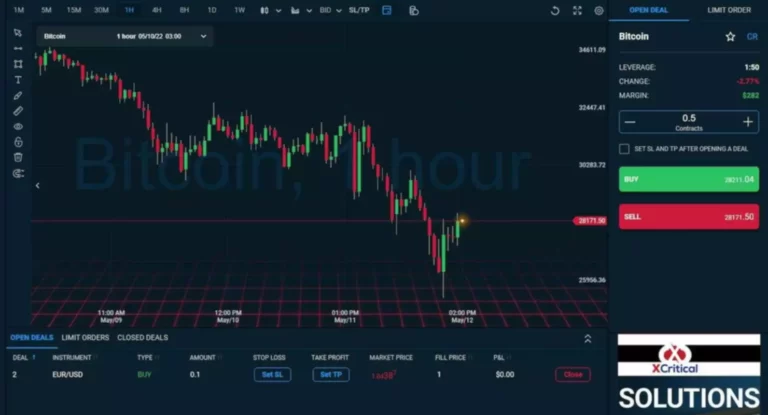In this article, we are going to explain liquidity, what a liquidity provider is, and the way it works. Besides that, we are going to talk about what features a trustworthy liquidity provider presents in addition to who’re the most effective liquidity suppliers in the business. Monetary liquidity is a crucial element of each market since it indicates the effectivity at which a monetary product may be traded with out depreciating in value. In this fashion, the function of a liquidity provider and a dealer within the foreign exchange market are complementary.
Who Are Liquidity Providers?
This collaboration also enables brokers to supply competitive pricing, resulting in tighter spreads for traders. Additionally, by leveraging LPs, brokers can reduce their own financial publicity, reducing operational risks and enhancing general market stability. In the world of foreign forex trading, liquidity providers play a pivotal function in making certain clean transactions between market individuals. They bridge the hole between retail traders, institutional buyers, and the larger foreign exchange market by offering entry to pricing and liquidity, which enables traders to execute orders at competitive prices. Liquidity suppliers (LPs) contribute to market effectivity by tightening spreads, decreasing slippage, and ensuring that orders are executed rapidly, regardless of market volatility. In the fast-paced world of forex trading, understanding the intricate relationship between liquidity suppliers and forex brokerages is essential for both merchants and trade professionals.
- Every Time a dealer places an order with a broker, the broker requires a counterparty to execute it.
- This causes the broker to succeed in out to its community of LPs to discover the most effective price and execution circumstances for the consumer.
- Brokers can blend elements of the earlier models, they offer ECN entry for some belongings while they entrance as market makers for different merchants.
- Different brokers can have different priorities when in search of out a useful liquidity provider.
- Quicker order execution minimizes slippage, making certain that merchants can enter and exit positions at optimum costs.
A forex dealer is an middleman that provides access to the financial markets for retail and institutional merchants. Brokers provide trading platforms, market entry, order execution, and additional buying and selling services. Their role is to bridge the hole between traders and the liquidity sources that enable them to purchase and promote financial instruments similar to foreign exchange, commodities, shares, and indices. The technology allows brokers to access multiple liquidity pools concurrently, ensuring aggressive pricing and sooner execution.
They maintain vast buying and selling volumes and provide competitive bid and ask prices, creating a strong buying and selling broker liquidity provider surroundings for brokers and their purchasers. Liquidity suppliers are integral to the buying and selling industry, serving because the backbone of environment friendly and dynamic market operations. Brokers depend on these providers to entry deep liquidity, aggressive pricing, and reliable execution for his or her purchasers. With Brokeree’s Liquidity Bridge, brokers can effectively join and aggregate liquidity from multiple providers, enhancing their trading environment and providing superior providers to their purchasers. The collaboration between brokers and liquidity providers ensures efficient commerce execution, reduces prices, and improves market liquidity.

Match-Prime’s devoted account managers and 24/7 technical assist ensure fast decision of all issues. As a regulated broker, we valued Match-Prime’s commitment to regulatory compliance and transparency. Their adherence to European regulatory frameworks, mixed with aggressive pricing structures and clear commission models facilitates the optimisation of our operations and the upkeep of cost-effectiveness for our clients.
With Out them, traders would encounter issue with transactions and the smooth circulate of trade. They are regulated by financial regulatory bodies, there are over a hundred regulatory bodies globally, these bodies have differing degrees of focus and authority. In the US there’s the Securities and Trade Fee (SEC), in Europe, there’s the European Securities and Markets Authority (ESMA), and in the UK there’s the Monetary Conduct Authority. In order for a broker to generate income, they need to be able to purchase low and promote excessive.
In this weblog submit, we’ll shed extra gentle on how these events work collectively to ease buying and selling and provide you with a deeper understanding of the interplay between these parties and the impression it has on trading actions. One Other instance is that if a dealer is making an attempt to buy a large amount of a inventory that is not very liquid. In this case, the broker might contact a liquidity provider and ask for a mortgage so they can buy the stock. They may also earn from other providers, such as providing analysis and analysis or charging for premium features or tools. The latest disturbing case I noticed was an LP out of London providing “uncooked” zero.6 pip spreads on EUR with a fee of $26 per million. I hope the LP behind this quote is studying this, because little did they know initially, but the supply was to considered one of my clients.
Understanding The Excellence: Dealer Vs Liquidity Provider

In this text, we’ll explore the significance of liquidity suppliers, why brokers want their services, and how they’ll effectively connect liquidity from a number of providers. In the fast-paced world of Foreign Exchange trading, brokers and liquidity suppliers (LPs) type an important partnership that ensures clean market operations, tight spreads, and efficient trade execution. Understanding how they collaborate can help traders and brokerage firms optimize their strategies for better efficiency and threat management.
A broker is an intermediary that connects traders to the financial markets, while a liquidity provider is an organization or establishment that provides the property and liquidity for buying and selling. Top-tier LPs present flexibility in danger management, permitting brokers to choose between full hedging, partial hedging or a hybrid B-Book strategy based mostly on market situations and publicity. Additionally, main LPs combination liquidity from a quantity of sources, mitigating single-point liquidity risks and ensuring stability even if one supplier experiences disruptions. This collaboration between liquidity suppliers and brokers helps to ensure a liquid and efficient FX market for traders. With the right partnership, brokers can leverage the strengths of liquidity suppliers to boost their choices, appeal to more shoppers, and finally succeed within the extremely aggressive foreign exchange trade.

Brokеrs are regulated by the federal government and monetary authoritiеs in each jurisdiction where they function. Internationally, brokers are regulated by regulatory bodies similar to MAS, SFC, ASIC, FCA (FSA), BaFin and CySEC. These regulatory our bodies have the authority to impose penalties, fines, and even revoke licence if brokеrs fail to meet their necessities.
Primary liquidity providers buy massive batches of belongings from the institutions that issue them. Some suppliers provide liquidity throughout a variety of markets while others concentrate on specific asset lessons like stocks, foreign exchange, commodities or cryptocurrencies. These trading https://www.xcritical.com/ facilitators hold inventories of one or more belongings or monetary devices, and stand prepared to meet purchase or sell orders as they arrive in. This permits markets to keep moving by ensuring that a purchaser or seller can at all times do business. The time period liquidity refers to the ease and velocity with which an asset can be purchased or offered without inflicting a big change in its price. Brokers with deep liquidity might help short-term merchants reduce costs and reduce threat by having the power to open and shut positions quickly.
B2Prime, a multi-asset liquidity supplier, is the top-quality solution that may assist enhance your small business because of its robust technology, and reliable services, primarily thanks to CySEC laws and global recognition. To complete transactions, Foreign Exchange brokers usually use an Digital Communications Network/Straight By Way Of Processing (ECN/STP) community. The transactions of other parties are delivered straight to a Tier 1 or extra liquidity supplier when brokers run a No Dealing Desk (NDD) model. In this case, the dealer assumes the opposing facet Proof of stake of the deal and offloads elevated threat to the mandatory counterparties. In return for his or her companies, brokers often receive a fee or unfold from each transaction. These charges symbolize the compensation for the execution providers provided by the dealer, while the liquidity suppliers benefit from the liquidity they supply.
The most typical method of entry is through a broker that has connections to a number of Tier 1 liquidity providers which may be used to satisfy their orders. That stated, Tier 1 providers only collaborate with partners with vast capital to scale back risks. A quality liquidity supplier is important for successful dealer operations. They present access to deep liquidity swimming pools with tight spreads and constant pricing, ensuring environment friendly order execution even during excessive volatility. Beyond direct execution benefits, a robust LP offers a quantity of advantages that not directly improve broker efficiency and competitiveness.


